The formation of holes [part one]
or, what my #CultureMovesEurope trip to study earth buildings in France taught me...
I’m in my little red Ford Fiesta with my daughter Milla. I feel a bit Thelma and Louise-y, on the return leg of a drive from Bulgaria to Normandy, not having done any murders, mind. Leaving France, we cut through the corner of Belgium. A sign by the road reads Trous en formation.
These words stay with me all the way home. Potholes forming. Holes in formation, like a squad of fighter planes. Maybe these holes are trying to teach me something. I imagine a line of young holes in training, knock-kneed, waiting to be assigned their lot. You, hole, will be depression. Ha, yeah, sorry, f*** you. You will be the inner part of a doughnut. You will be a place so dark and dense that nothing, not even gravity, can resist. You will be the result of a moth dinner party. You will be an asshole. You will be the imprint of a house raised from a marsh once the clay is dug, slowly filling with salty water, reeds and insects.
By the time we get back we will have covered over 6,000 km, and I’ve never driven that far as a solo driver. Especially not in the space of 2 weeks. In the car is an old French hoe, a lamp that looks like a turtle, some gruyère, wine to give the friend who looked after the cat, Chamonix biscuits, scallop shells and clay which I pinched from the marais of Normandy. There are a few books and pamphlets about the cob — or bauge— buildings of that area of France, the Parc naturel régional des Marais du Cotentin et du Bessin.
In Bulgaria, we live in a place full of mud buildings. In the region we inhabit, the Rose Valley, a great deal of village dwellings, ours included, are made of mud — local clay, sand, gravel and straw formed into bricks and baked in the sun. You can imagine massive communal brick-making summers, under communist rule and before. I was curious about this aspect of life in Bulgaria. People here have a tendency to undervalue that which is under their noses. Vernacular architecture included. Huge swathes of rural Bulgaria are filled with adobe buildings, but more and more often, you see these mud bricks, heavy and dense, discarded alongside forest roads, left to melt into a pile at the dump, or to become a grassy tumulus, a smaller neighbour to the great Thracian tombs of my valley.
Which is a shame, because adobe, cob, rammed earth, light clay, and all its various incarnations are a massively important, sustainable and health-giving building material. My neighbours now know that I collect these old unwanted mud bricks and reuse them. A friend asked me where to get earth plaster the other day. It is literally, I said, under your nose. Just go and dig a hole in the garden, dig past the topsoil and you will find the sandy clay that is everywhere in our region. You almost need add nothing to it, apart from some kind of fibre for strength, and perhaps a bit of fresh horse manure for stickiness and the sheer delight of of how tactile and workable it will become. Either that, or find a pile of unloved mud (кирпичени) bricks and melt them down with water.
Anyway, I applied for a grant through the Creative Europe mobility scheme #CultureMovesEurope and was lucky enough to be awarded it. I decided to go for the green top up, which meant not flying. So we drove. Milla is 16 and not old enough to qualify as a grantee, so we were on a very tight budget. But the thrill of getting the ferry to Bari from Dürres in Albania was too much to resist, despite the high road tolls in Italy, so we went that way.
The last time we drove through Albania, I was pregnant with this lovely daughter, with her lovely sister wriggling in the back. In the intervening years, Albania has managed to build an entire free road network including tunnelling under a whole mountain nature reserve, meaning that the travel time in that country was about an hour and a half. Which was good, because we had to buy a ferry ticket with no internet and get on the boat, and the customs people were rather curious about what two girls might be doing driving a little red car onto a night ferry to Puglia.
We had a little cabin. We got to chug into Bari in the morning sun - a place I neither of us had been to. We made time to drink coffee and wander around before setting off up the spine of Italy towards France. I knew this part would be expensive, so despite the atrocious rain and wind, I kept driving through the night, prioritising pizza over paying for accommodation. We made it through the Fréjus tunnel by early morning, me swearing to stay off the péages in France to save money. We found a cheap place to collapse in Lyon, and once I had slept a little, explored in the early evening light, taking in the river snaking through the city and the dense layers of history onionskinning around it. But for all Lyon’s brooding appeal, Rennes was a revelation.
I come from Bristol, and despite having l lived in Bulgaria for years, the feeling of being in a fellow capital-of-the-west-country, mirroring aspects of terrain and mindset of my own native land was resonant. Where Bristol has the joyous rainbow terraces of Totterdown, perched high above the docks, Rennes has the rainbowed half-timbered houses tottering around its squares and pedestrian streets, lined with young people eating the hot-dog-galette street food of the town, music spilling out everywhere, and a decidedly less austere vibe than in the shadow of the Alps. I was excited, too, to see the ecomuseum on the outskirts, a thoughtfully curated former farmhouse, still home to important orchards and smallholdings, miniature sheep, goats and, crucially, an exhibition on the vernacular architecture and cob building techniques of the region which, although already quite dated in its style and presentation, was the first time I had seen this topic presented in a museum.
This is why we were on the way to the marshes of Normandy, and why I wanted to travel all the way there to explore. Nowhere, in all my years of learning about earth building, had I seen any as lovingly and thoroughly documented, a community so actively involved in preserving and rehabilitating its earth building heritage, or a person as uniquely motivated and tirelessly active as the architect at the heart of the national park we were heading to.
Some of these cob buildings are over 500 years old. Some of them have already been lost, eaten away by a combination of bad cement facades and the unrelenting southwesterly wind and rain. But many are still standing, and even online from 3000 km away, I could trace a virtual route around the maps made to record these buildings by the team at the park. What motivated them. How did they do it? And what adventures in modern, more insulative cob-building techniques had they been undertaking recently in the form of the CobBauge project?
All of these questions were what propelled me to make this long trip. Excited by Rennes and the ecomuseum, Milla and I drove through the beautiful countryside to our destination, a little house, itself rendered in earth plaster, on the edge of the park, and home to a wonderful woman who would take us out to dig clams the next day, after we had started our exploration of the cob buildings in the region.
I was excited to meet François Streiff, the architect at the heart of the project, who would be able to give me the answers to my questions and set me off on a trajectory of discovery in the park. It was his comment on how the houses raised from the marsh left impressions in the shape of ponds, pits and water-filled holes that made me notice that little sign on the way home.
And when we did get home it was straight to work. But I also found time to dig clay for a workshop with local children, to put into action what I had witnessed and learnt. I’m excited to tell you about it.
Only for that part, you’ll have to wait for the next instalment in this series…
This work was produced with the financial assistance of the European Union. The views expressed herein can in no way be taken to reflect the official opinion of the European Union.
#CultureMovesEurope #PushBoundaries #CreativeEurope

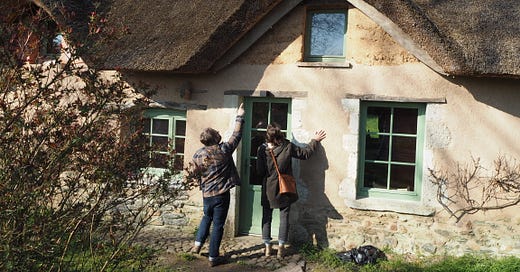



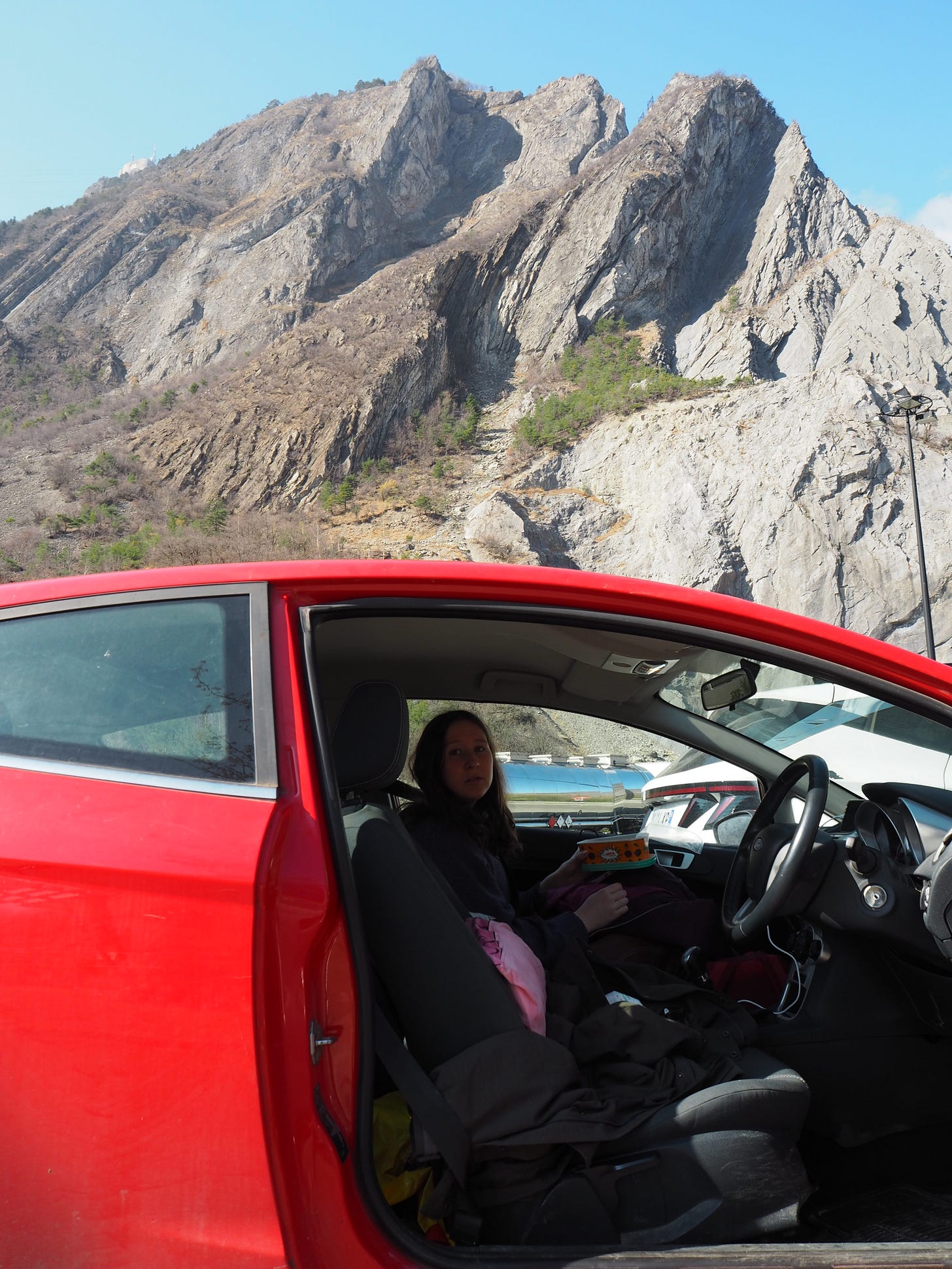
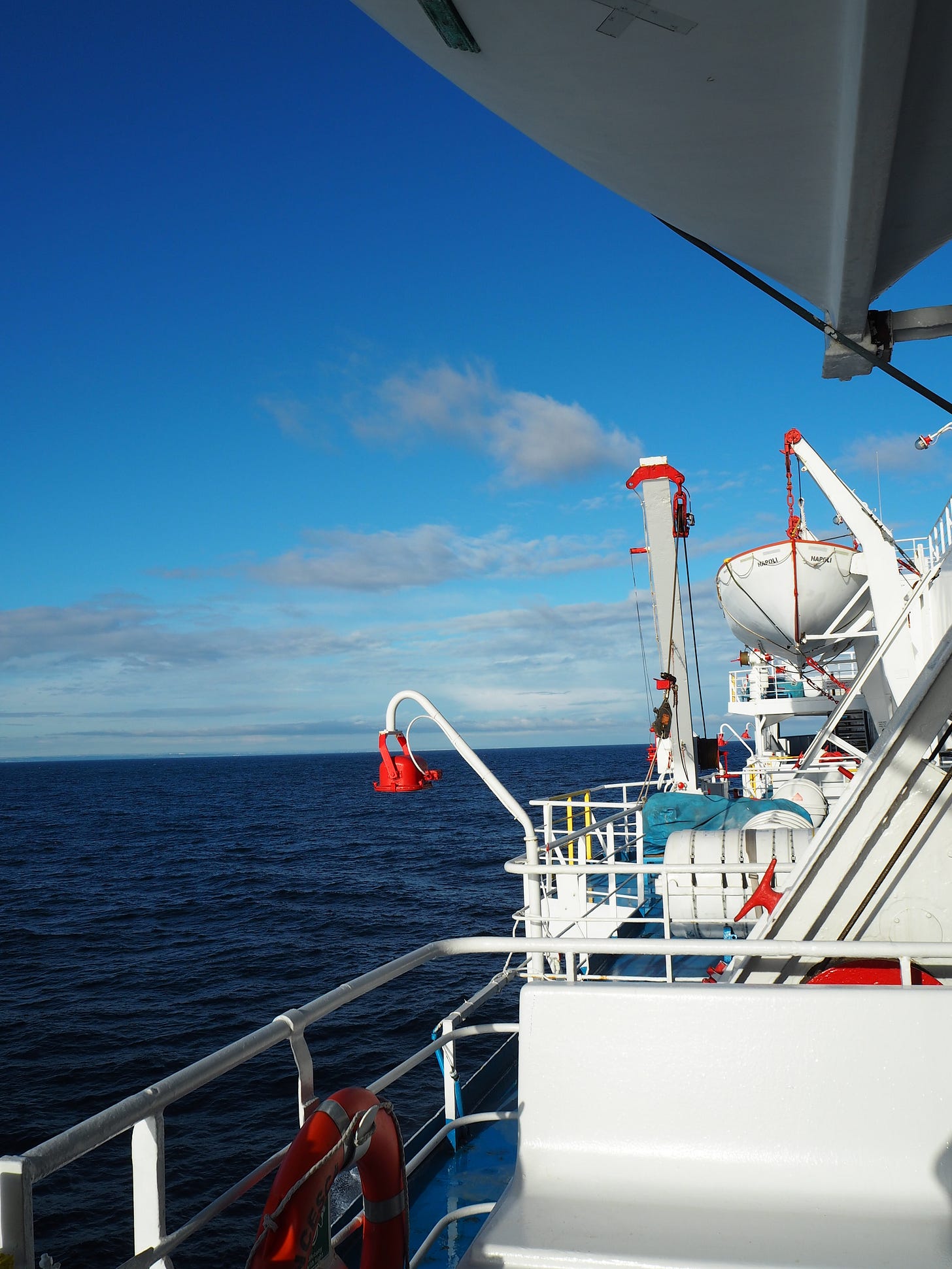
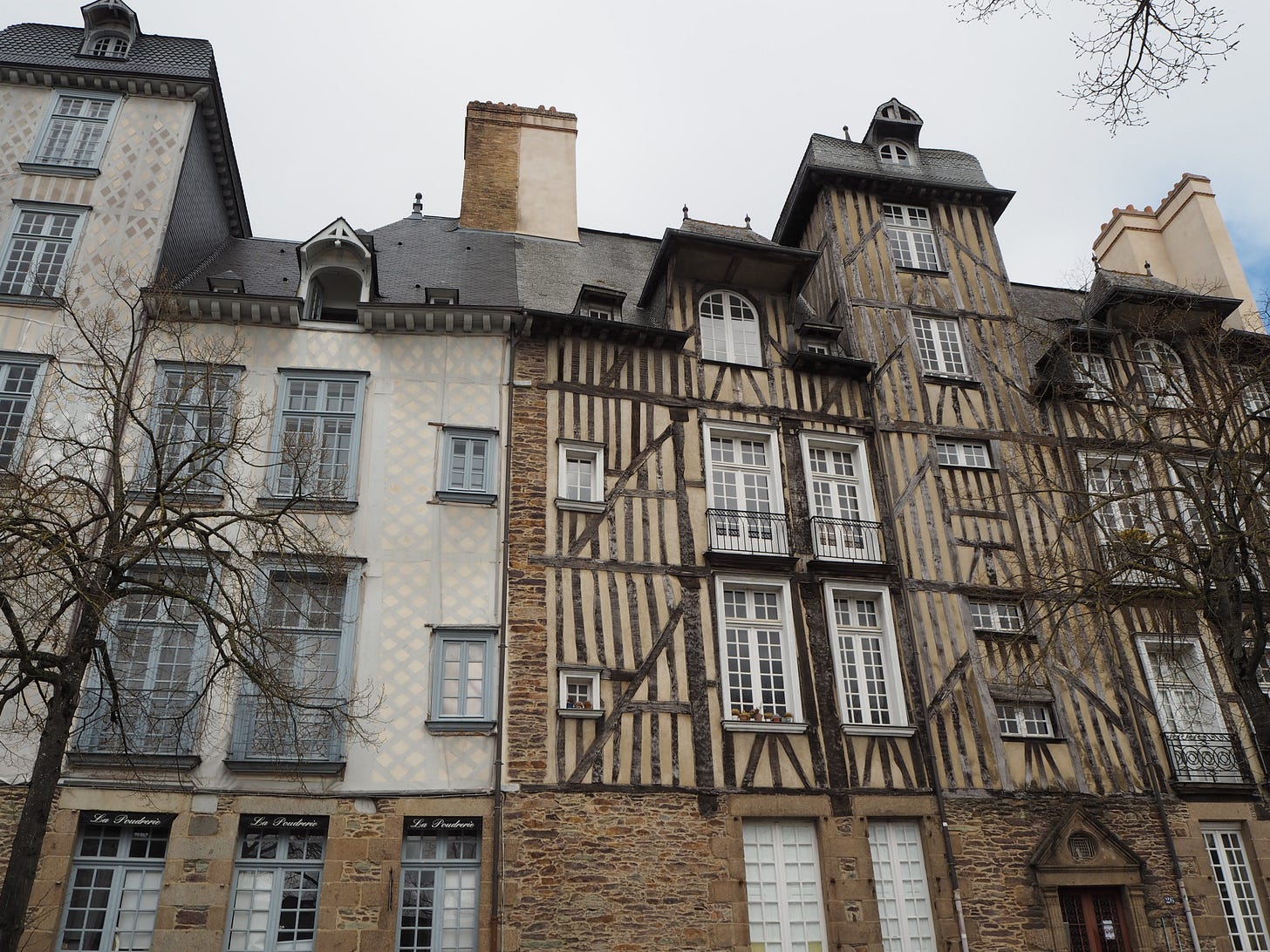


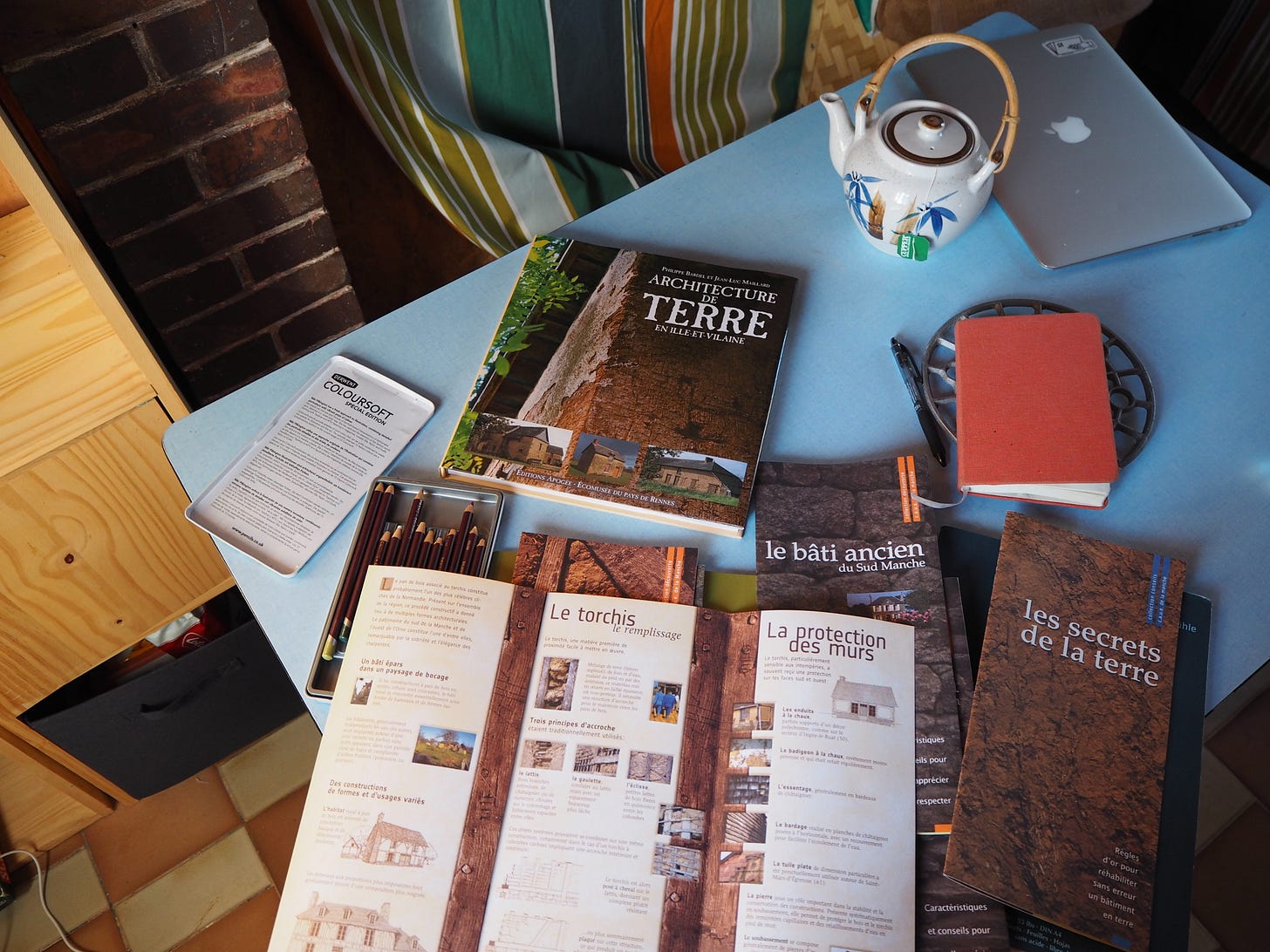
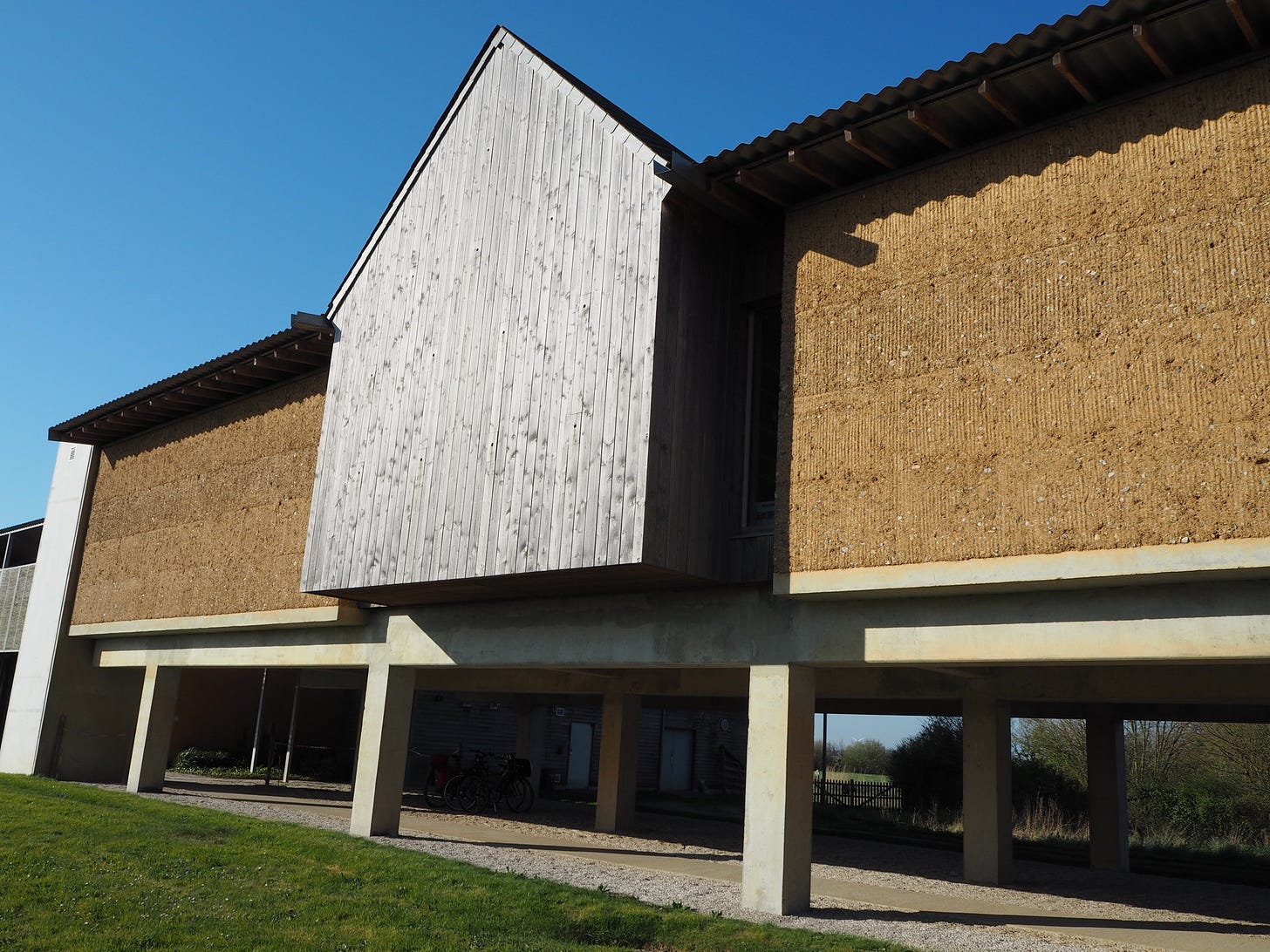

Hi Jo. This is great. I really like the connection you are making between the two traditions of earth building especially because, as you explain, they are seen very differently between the two countries. I will pass it on to my muddy friends in these parts to the north of the mountains. Looking forward to part 2. All the best
Loved that piece! Normandy is in my bucket list and you displayed its idiosyncrasy so well!